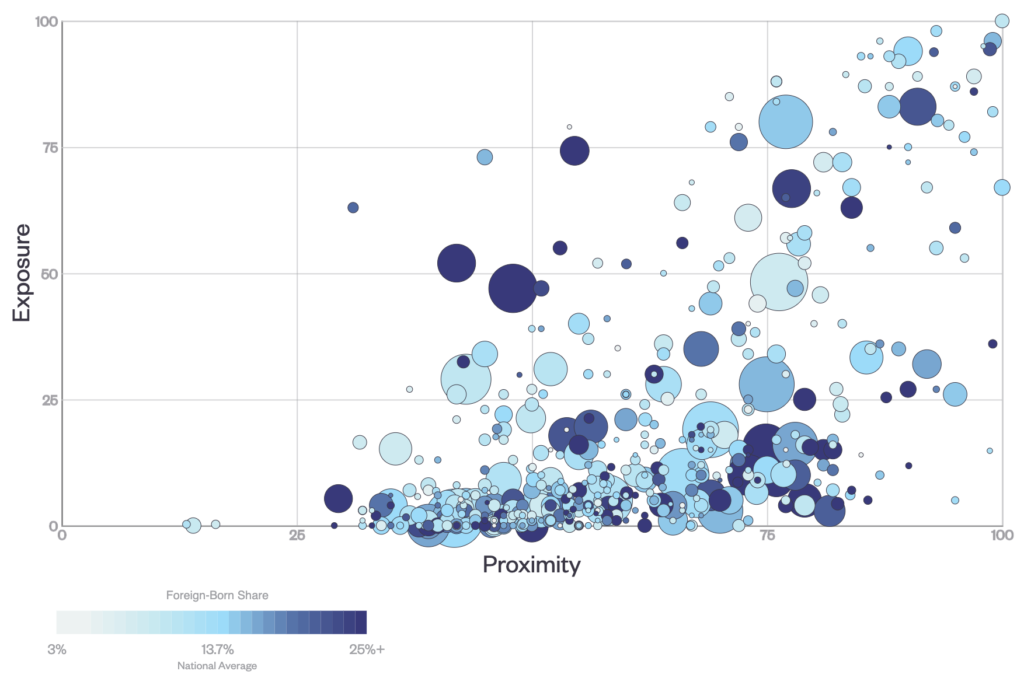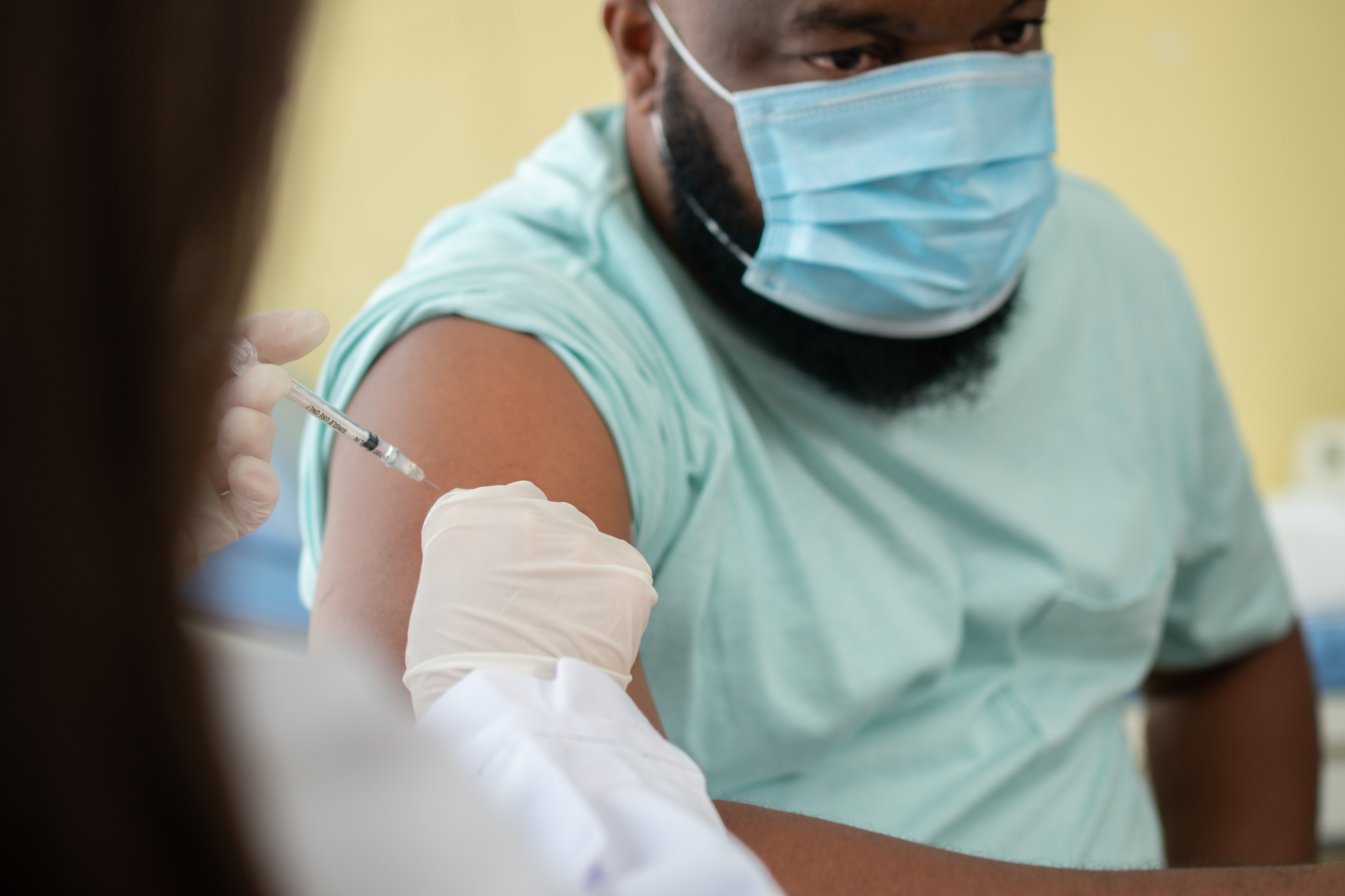Immigrant Healthcare Workers Are Critical in the Fight Against Covid-19
Date: April 9, 2020

As the coronavirus outbreak affects more states, demand for doctors, nurses, and other critical healthcare workers is soaring across the country. As 16.4 percent of all workers in the U.S. healthcare industry, 2.8 million immigrant healthcare professionals are playing a vital role on the front lines against the disease. In some states, immigrants make up an even more significant share of the healthcare workforce. In New York State, the epicenter of the U.S. coronavirus outbreak, more than 400,000 immigrants made up at least one in three healthcare workers in 2018.
Figure 1: Immigrant Healthcare Workers in the United States
| State | Number of Foreign-born Healthcare Workers | Share of All Healthcare Workers, Foreign-born |
| United States | 2,804,897 | 16.4% |
| New York | 402,731 | 34.3% |
| New Jersey | 154,508 | 30.6% |
| California | 556,016 | 31.6% |
| Michigan | 45,102 | 8.1% |
| Louisiana | 7,389 | 3.0% |
| Massachusetts | 108,984 | 22.6% |
| Florida | 307,153 | 28.4% |
| Illinois | 114,405 | 16.9% |
| Washington | 62,684 | 16.9% |
| Pennsylvania | 75,038 | 9.3% |
| Texas | 249,280 | 18.6% |
| Virginia | 57,234 | 14.5% |
| Georgia | 50,121 | 10.7% |
| Arizona | 47,087 | 14.3% |
| Maryland | 85,522 | 24.9% |
| North Carolina | 38,019 | 7.3% |
| Ohio | 41,777 | 5.8% |
Even before the Covid-19 crisis began, America faced a severe shortage of healthcare workers. In 2018, there were 27 open healthcare practitioner jobs—such as doctors, surgeons, registered nurses—for every available unemployed healthcare practitioner. Overall in the healthcare sector, there were 12.3 open job openings for every available unemployed worker.
In states hit the hardest by Covid-19, where the number of severe cases requiring intensive medical care has surged, acute shortages of healthcare professionals could significantly limit capacities to diagnose, treat, and assist patients quickly. There were 20.9 open jobs for every unemployed healthcare practitioner in New York, 26.8 in California, and 36.7 in Washington in 2018.
Figure 2: Shortage of Healthcare Workers in the United States
| State | Ratio of open healthcare practitioner jobs to unemployed healthcare practitioners, 2018 | Ratio of open healthcare jobs to unemployed healthcare workers, 2018 |
| United States | 27.0 | 12.3 |
| New York | 20.9 | 7.1 |
| New Jersey | 22.3 | 11.0 |
| California | 26.8 | 12.7 |
| Michigan | 23.5 | 10.2 |
| Massachusetts | 31.6 | 14.6 |
| Florida | 19.0 | 10.4 |
| Illinois | 20.7 | 8.1 |
| Louisiana | 23.1 | 7.6 |
| Washington | 36.7 | 21.0 |
| Pennsylvania | 19.8 | 9.7 |
| Texas | 20.8 | 9.0 |
| Virginia | 33.0 | 13.8 |
| Georgia | 37.4 | 15.8 |
| Arizona | 35.2 | 16.9 |
| Maryland | 23.4 | 13.4 |
| North Carolina | 21.6 | 11.0 |
| Ohio | 32.5 | 11.0 |
Data shows that to some extent, immigrants are helping to fill these critical personnel gaps. In 2018, more than 244,000 immigrants served as physicians and surgeons in the country, making up 28.2 percent of the workforce in these occupations. Meanwhile, immigrants made up one-fourth of all health aides, including home health aides, personal care aides, and nursing assistants, and 15.3 percent of all nurses. In other healthcare occupations that are particularly important in the Covid-19 crisis, immigrants also made up significant shares of the workforce, including about one in five lab technicians, more than one in eight respiratory therapists, and one in 20 emergency medical technicians.
Figure 3: Select Occupations in the Healthcare Industry in the United States
| Occupation | Number of Immigrant Workers | Immigrants’ Share of Workforce |
| Physicians and Surgeons | 244,249 | 28.2% |
| Health Aides | 578,270 | 25.3% |
| Lab Technicians | 58,013 | 19.6% |
| Nurses | 597,426 | 15.3% |
| Respiratory Therapists | 14,593 | 13.6% |
| Emergency Medical Technicians | 8,543 | 5.1% |
Again, in the states that are struggling with some of the sharpest increases in new infections, immigrant healthcare workers prove to be even more vital. In New Jersey, which has the second-largest number of confirmed cases in the country, immigrants made up two in five physicians and surgeons, three in ten nurses, and one in two health aides in 2018.
Figure 4: Immigrants’ Share of Healthcare Workforce in Select State
| State | Physicians and Surgeons | Nurses | Health Aides |
| New York | 36.4% | 30.9% | 60.7% |
| New Jersey | 40.3% | 29.5% | 53.7% |
| California | 33.1% | 35.2% | 44.3% |
| Michigan | 27.1% | 7.0% | 4.8% |
| Massachusetts | 34.5% | 17.1% | 39.8% |
| Florida | 36.5% | 25.8% | 45.6% |
| Illinois | 30.6% | 17.5% | 20.9% |
| Washington | 24.1% | 15.9% | 29.0% |
| Pennsylvania | 23.7% | 7.9% | 11.7% |
| Texas | 31.7% | 20.6% | 24.5% |
| Virginia | 32.4% | 12.7% | 17.3% |
| Georgia | 27.8% | 11.1% | 17.5% |
| Arizona | 28.8% | 13.0% | 21.4% |
| Maryland | 31.0% | 26.6% | 40.9% |
| North Carolina | 16.7% | 6.8% | 4.4% |
| Ohio | 27.1% | 3.7% | 7.8% |
Many immigrant healthcare workers also speak multiple languages, making them a valuable asset to reach vulnerable communities who may have limited English language proficiency. In a medical emergency like Covid-19, it is critical that healthcare professionals can communicate clearly with each and every patient, regardless of language.
The vast majority of immigrant healthcare workers, about 69 percent in the country, spoke both English and at least another language in 2018. Bilingual skills are even more common among immigrant physicians and surgeons, nurses, and lab technicians, with more than 70 percent of them speaking more than one language.
Figure 5: Bilingual Immigrants Healthcare Workers in the United States
| Share of Immigrant Workforce, Bilingual | |
| All Healthcare Workers | 68.9% |
| Physicians and Surgeons | 74.9% |
| Nurses | 72.3% |
| Health Aides | 56.2% |
| Lab Technicians | 78.9% |
| Respiratory Therapists | 68.5% |
The shares of immigrant healthcare workers with bilingual skills are higher than the national average in some states like California, Michigan, Illinois, and Washington, where more than 70 percent of all immigrant healthcare workers spoke another language in addition to English in 2018.
Figure 6: Bilingual Immigrant Healthcare Workers in Select States
| State | Share of Immigrant Healthcare Workers, Bilingual |
| New York | 53.1% |
| New Jersey | 66.5% |
| California | 77.5% |
| Michigan | 74.8% |
| Massachusetts | 69.7% |
| Florida | 67.1% |
| Illinois | 78.0% |
| Washington | 75.0% |
| Pennsylvania | 67.8% |
| Texas | 71.1% |
| Virginia | 74.0% |
| Georgia | 60.1% |
| Arizona | 71.1% |
| Maryland | 71.0% |
| North Carolina | 63.2% |
| Ohio | 68.1% |
In this unprecedented war against a global pandemic, immigrant healthcare workers are fighting side by side with their U.S.-born counterparts to save lives and keep our communities safe. Among them, Dr. Tarig Elhakim, a doctor from Sudan, is working on the front line in a Miami hospital. He says the country needs more healthcare professionals like himself to contain the virus.
If you want to explore how immigrants often disproportionately serve in some of the most at-risk jobs in the Covid-19 crisis, including the healthcare occupations featured in this brief, click the image below to explore our data visualization.

Finally, check out our research portal of Immigration and Covid-19. If you have any specific questions about our data, please reach out to us at info@newamericaneconomy.org.






